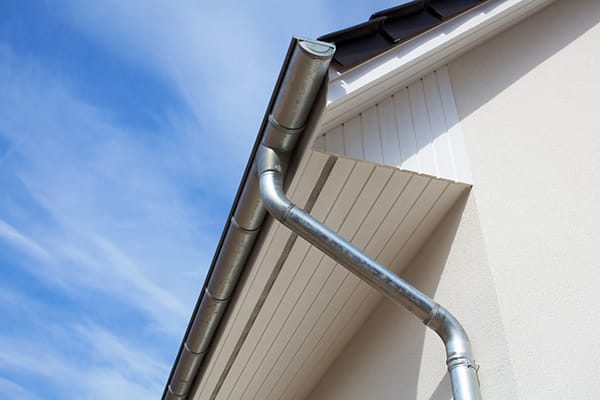 When Should You Repair and Replace Your Gutters? The question as to when to replace your gutters may appear obvious, but you should inspect your gutter for things which are not very obvious. Following are a few clues that your gutter might have issues. Mold or peeling paint within your home’s exterior may be a sign that your gutters are leaking and will necessitate replacing or fixing. The discoloring of the siding of your home may be from backsplash. Wind blowback may induce water out of the overflowing gutters into the outside of the siding. The discoloration of the siding is a sign that you have a gutter problem. In the winter, examine if there is snow and ice are building in the gutter and on the roof. These may lead to leaks that damage your house. Water may seep behind the gutters in some cases and result in water leaking into your walls and causing rot and mold.
When Should You Repair and Replace Your Gutters? The question as to when to replace your gutters may appear obvious, but you should inspect your gutter for things which are not very obvious. Following are a few clues that your gutter might have issues. Mold or peeling paint within your home’s exterior may be a sign that your gutters are leaking and will necessitate replacing or fixing. The discoloring of the siding of your home may be from backsplash. Wind blowback may induce water out of the overflowing gutters into the outside of the siding. The discoloration of the siding is a sign that you have a gutter problem. In the winter, examine if there is snow and ice are building in the gutter and on the roof. These may lead to leaks that damage your house. Water may seep behind the gutters in some cases and result in water leaking into your walls and causing rot and mold.
Overwhelmed by the Complexity of Tools? This May Help
The weight from debris and clogs might result in a gutter to pulling away from the home or sag, and this can result in the water leaking behind the gutter that leads to chaos. In the event your gutters aren’t hanging properly, they may not channel water through in the downspouts effectively.
The Best Advice About Gutters I’ve Ever Written
If there are cracks in the foundation, or if your basement is damp, this is another sign that your gutters aren’t working properly. Gutters can clog and induce water to over flow across the sides hence leading to the accumulation of water all around your foundation. These are the kind of problems which a gutter company that is experienced may spot for you. Don’t wait until a problem arises. Make an effort to inspect your gutters a few times annually. You do not have to climb the roof to inspect the gutters. Walk around your property and look for signs that the water is the reason behind erosion in unexpected locations. Small sections of tough material in which you first had smooth topsoil are just one sign. Another sign is little area with topsoil which is irregular or where the water on what was a smooth area now pools. Inspect your gutters visually from the ground. Specifically, make it a point to walk around when there is a storm. See your gutter system since it works. Assess each downspout as it is raining and observe where the water flows once it exits the downspout. In the event you live a place that has deciduous trees which drop their leaves in the autumn, be sure that you search for blockages and overflows resulting from the buildup of the leaf material especially should you not have gutter protection in your gutter system. Do the same thing in winter especially after a snowstorm in freezing weather.